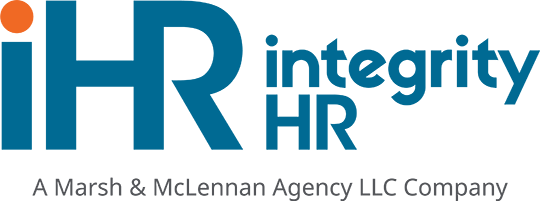New Hire Necessities Part 2: The First Day
There’s nothing quite like the first day jitters.
Whether it’s the first day of grade school, college classes, or a new job, the nervousness of starting a new adventure seems to span all generations.
It’s likely that your new hire is experiencing some unease and excitement as they prepare for their first day – setting their alarm clock early, mapping out their commute, and wondering if they’ll fit-in.
When you develop an effective onboarding program, your new hire’s “jitters” at starting a new job are put at ease quickly, enabling a positive first impression of working for your company.
In Part 1 of the New Hire Necessities blog series, we shared tips for creating an effective onboarding experience for your new hire, prior to their first day. The more arrangements you make and information you share with your new hire prior to their first day, the more assured they will feel of your preparedness to welcome them day one.
Your employee’s first day is their first experience working for your company, which plays a significant role in their success and retention on your team.
While a successful onboarding program isn’t only about the first day, providing an informative orientation experience is the foundation for effective onboarding.
Below you’ll find a sample first day we compiled to help you build the best foundation for your onboarding program. We even included a few bonus tips to help you make it extra special for your new hires – after all, you only get one chance to make their first day a great one!
New Hire Necessities Part 2: The First Day
Employee arrives at the office.
Remember, they should have received information in the pre-first day email you sent them like: what time to arrive, where to go, and who to ask for.
Make sure their manager is present in the office for their first day! Nothing says, “I’m not prepared to welcome you” like not being there to welcome someone!
Tip: Give the new hire a welcome gift with company branded merchandise when they arrive. Items like a company coffee mug, pen, t-shirt, or notepads make for great gifts!
Security policies are completed.
Deliver any keys, ID badges, or other security features to the new employee in the beginning of the day and explain any security policies you have in place.
Do they have to wear a badge at all times? Do they need a key to get in and out of the facility? Let them know before they accidently lock themselves out!
Manager introduces the employee to the team.
Have their manager introduce the new employee to the larger team, starting with those they will contact the most or work with directly.
Consider creating a “cheat-sheet” explaining who to contact when they need help with certain areas or topics until they are accustomed to everyone’s roles.
Tip: This is a great time to introduce them to their mentor and explain how their mentor will help them throughout the orientation process. Their mentor could even be the one to introduce them to the team!
Brief tour of the office and facilities.
Show the new employee the most important locations and resources in the office, but try to keep it short to avoid overwhelming them. Remind them that they can always ask for help if they can’t find something or aren’t sure where to go.
Tip: The employee’s mentor could be their tour guide and their point-of-contact for questions, if their manager needs to tend to other responsibilities.
Manager and employee review the onboarding plan.
The onboarding plan should be created by both the manager and new hire prior to their first day and the finalized in a pre-first day meet and greet (learn more in Part 1!).
Then, on the first day, the manager and employee can simply review the plan. Completing an onboarding plan gives the employee a solid understanding of their role and assurance that they are on the same page as their manager.
Tip: The onboarding plan template should include:
– Basic information about the employee’s start date, role, department, supervisor, and job description
– Summary of all pre-work they completed
– Summary of Day One and Week One events and tasks
– A training plan agenda
– Goals for the first 30, 60, and 90 days
Company and departmental orientation.
The manager should provide an introductory overview of the company and the employee’s department. Make sure to review things like the company’s core values, mission statement, and organizational chart.
The manager could provide resources for the new employee to review on their own to allow them to have some down time.
Manager confirms employee has completed all paperwork.
They did that I-9, right? Good.
Employee works on Day One Tasks.
If you look at comics depicting first day experiences, they often either poke fun at employees having nothing to do or the miracle that they even survived.
You can find a happy middle-ground by balancing logistics with a few basic tasks. Provide the new employee with a checklist of items to complete, like getting familiar with their computer, setting up their email, and recording their voicemail.
Tip: If you need them to jump into some projects from the start, provide a guided introduction and the resources they need to complete their role-related responsibilities. Make sure to remind them that their mentor and manager can assist with any questions!
Manager checks-in at the end of the day.
This last part might seem trivial, but it really does make a difference! The manager should check-in at the end of the day for the same reason they should be there to greet the new employee in the morning – your employee will feel valued.
Starting and ending Day One knowing that showing up made a difference in the workplace will start your employee’s onboarding experience on a positive and productive foundation.
Customize Your Plan!
We hope the necessities shared in this sample first day help you to plan and provide a great Day One for your new employees!
Remember that this plan should be adapted and embellished to fit your company culture and industry, but remember to include the necessities we listed above to maximize the success of your onboarding program.
In Part 3 of our “New Hire Necessities” blog, we’ll share some tips for continuing your onboarding process beyond Day One!
Do you need help creating a successful onboarding process for your company? We can help! Give us a call at 877-753-0970 or check out our website to learn about outsourcing your employee issues to Integrity HR here.










